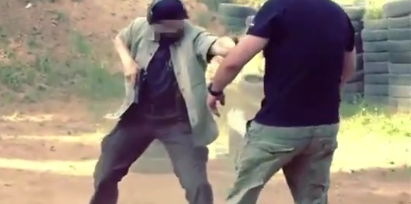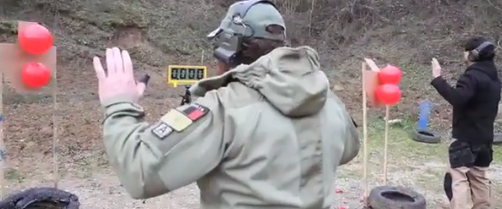Gun-Safe Cracking
It’s Too Easy To Crack Your Gun Safe
Story and photographs by Dave Goetzinger
Not long ago, I was in the market for a small handgun safe. After visiting a local gun shop and bringing home my new gun safe, I took it out of its box, and wondered if I’d spent too much. Up close, the device looked insubstantial. A nagging suspicion motivated me to go online, where I quickly discovered research by Marc Tobias and Tobias Bluzmanis of Investigative Law Offices and Security Laboratories. Their work confirmed my suspicion about the safe. It could be broken into easily.
I started thinking of these safes as Chinese-made, battery-operated toys for gun owners.
Tobias and Bluzmanis, who specialize in evaluating security systems, did an analysis of handgun safes in 2012. Their investigation began with a product called the Strong Box. About 200 of these had been issued to personnel of Clark County Sheriff’s Department in Vancouver, Wash., after the ten-year-old daughter of a Clark County Deputy was accidently shot and killed by her brother who had managed to get a hold of his father’s department-issued handgun. The Sheriff’s Department instituted a policy that all department-issued weapons must be secured in gun safes. Thus the safes, which were issued to personnel between 2003 and 2004. In 2010, however, the three-year-old son of Detective Ed Owens died of a self-inflicted gunshot wound after the boy’s sister was able to remove a handgun from their father’s department issued safe.

Tobias and Bluzmanis found that the safe in question could be vibrated open. Lifting it by one side several inches from a floor and dropping it was all that was needed. Their investigation then broadened into an examination of other safes. None of the safes they examined proved secure. Tobias wrote a piece for Forbes magazine on their findings, and posted video of their examinations on his YouTube channel. He also filed a class-action lawsuit against a safe manufacturer in 2012, prompting them to settle out of court. Tobias and Bluzmanis are now examining that manufacturers latest product designs and are considering filing another lawsuit.
Among the safes Tobias and Bluzmanis compromised was my safe. The product was still for sale, unchanged, as of 2015. The salesman who sold it to me claimed ignorance about the product being defective and processed my return without objection. Several days later, I purchased a more secure safe by Fort Knox, by which time I was convinced that someone needed to do follow-up research on handgun safes. So I decided to do it myself. I went to Cabelas and selected a several product by multiple safe companies, then set up an iPhone at home to record my examinations.
Neither safe posed any challenge to my attempts to break in. With video on my iPhone, I went to a different retailer and negotiated a low price on another safe to break into. In the end, I broke into seven safes. The skills needed to accomplish this were no different than the skills I developed in childhood taking my toys apart. Indeed, I started thinking of these devices as Chinese made, battery-operated toys for gun owners.

Design problems with these safes fell into two main categories. They nearly all had keypads set into rubber or plastic fittings that could be pried or peeled up, exposing holes into the interior of the locking mechanisms. At the very least, there would be one hole allowing a cable to connect the keypad with the mechanism inside. These holes were easily exploited. Another shared characteristic was that none of the interior components of the locking mechanisms were arranged in ways to thwart probing with wires. If I couldn’t directly access a concealed reset button or a latch release, I could poke a solenoid with a paperclip or pull out wiring to actuate a locking mechanism from the outside. Finally, all the safes shared the characteristic of cheap construction, such as loose hinges, ill-fitted joints and extraneous holes.
“Manufacturers couldn’t care less,” Tobias says, “nor do they have any expertise in gun-safe design. It is all about money. That obviously trumps the safety and security of the consumer.” In April of 2012, Tobias contacted the Vice President of Marketing for a safe manufacturer and offered to go to Chicago and brief the engineering team on the design problems he and his colleague uncovered. They were uninterested in his input. The spokesman for Walmart was equally uninterested in hearing from Tobias about his concerns regarding the products they sold.
Gun owners need to understand that Chinese-made, battery-operated toys are being marketed to them as safes, and a series of governmental oversights in the United States have created an environment conducive to marketing these products. Four of the products I tested for this article are advertised as being approved by California’s Department of Justice (DOJ), meaning they meet California’s DOJ Regulatory Gun Safe Standards. The fact is cited on the manufacturer websites and on the boxes the safes come packaged in. Some of the websites even sport official-looking seals to draw attention to the California DOJ approval, though California has no official seal to designate this.

To get California DOJ approval for a handgun safe, a manufacturer submits four of a given model to be tested by a Certified FSD Laboratory that has been vetted by the DOJ. FSD means firearm safety device. The safe manufacturer must also provide the name and model number of the device, a description of the device, a description of the product’s intended use, including a description of how to operate the product safely, and the type, make, or model of firearm(s) the device is designed for. The safe must also meet California’s gun-safe standards, which is easy to do.
Testing procedures are outlined in California’s Penal Code, Chapter 6, Section 4095. All tests are intended to replicate forces exerted through the use of common household tools — like screwdrivers and paperclips — for approximately ten minutes. In addition to describing the conditions under which tests are performed (at temperatures between 16 and 27 degrees Celsius, with a primed case installed in a locked firearm, etc.), the statute describes a long series of tests to be performed on gunlocks. Only subsection (e) of the statute describes tests for what it calls lock-box-type devices that can completely contain and enclose a firearm. They’re dropped on a concrete slab. They’re dropped from a height of one meter and one centimeter with the locking mechanism facing up, and with the locking mechanism facing down.

Following these examinations, the lab submits testing results to California’s DOJ, which performs no additional tests. Upon approval, the device is listed on California’s Roster of Approved Firearms Safety Devices. The manufacturer is then free to cite the approval on product packaging — complete with official-looking seal.
One problem with this process, which Tobias has commented on in his writing, is that California’s DOJ Regulatory Gun Safe Standards do not address methods of covert entry or mechanical bypass techniques. Another glaring problem is that Certified FSD Laboratories are set up to test gunlocks, not safes. The tests performed on locks are done to specific purpose (for example, manipulating cylinders to determine how resistant they are to picking), the dropping of so-called lock-box-type devices is done to no specific purpose. A device is simply deemed to have failed the dropping test if it is disabled, if the firearm is made functional or if the firearm discharges the primed case during the test.
Obviously, the word disabled could meaning anything, including that a lock box is rendered inaccessible by being stuck closed, in which case security is no longer an issue. Furthermore, a modern center-fire handgun won’t discharge when dropped from a height of one meter, so dropping a lockbox with a center-fire handgun inside tells an examiner nothing. All of which is to say that California’s Penal Code, Chapter 6, Section 4095, is inadequate to address safes and is outdated by over two decades.

To complicate matters for the consumer, manufacturers of portable handgun cases often claim their devices meet Transportation Security Administration guidelines. Yet the Firearms and Ammunition guidelines established by the TSA also make no mention of covert entry. According to TSA guidelines, “Locked cases that can be pulled open with little effort cannot be brought aboard the aircraft.” The phrase “pulled open with little effort” is the only language in the guidelines that might be construed to address unauthorized entry, forced or otherwise. Since TSA does not endorse products (or services, or entities), responsibility is left to manufacturers to decide — or to make the claim, anyway — that their products are TSA compliant.
California’s DOJ Gun Safe Standards and TSA’s Firearms and Ammunition guidelines are easy enough to satisfy that, for manufacturers of cheap safes, they’ve become inadvertent marketing ploys. That manufacturers of these products know nothing about security doesn’t prevent them from seeking California DOJ approval, or from invoking TSA Firearms and Ammunition guidelines if they think they can get away with it. Who can deny the incentive? The gun owner market is a specialty market rife with gadgets and gear, and toy handgun safes are good money.
One can argue the semantics of what constitutes a “lock box” or a “safe,” but that won’t change the situation. Toy safes are being foisted on gun owners, people who’ve taken upon themselves the responsibility of owning firearms. Any effort to take that responsibility seriously by securing a gun in a device like the ones I tested would be undermined by the device itself. This means the gun owner who is looking for a small handgun safe has few choices. Fort Knox and V-Line make handgun safes with pushbutton mechanical locks. These are sturdy and have few of the weaknesses I found in other safes, but they could be better. The gun owner market is still waiting for the handgun safe that gun owners deserve. AmSJ



